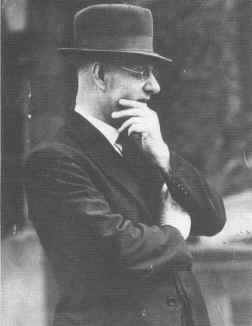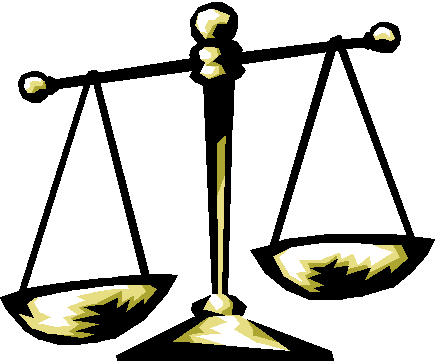 |

|
 |
JOHN
CURTIN (Prime Minister 1941-45) was
born in the Victorian mining town of Creswick in 1885. His father was a
sergeant in the Victorian police and the family moved about Victorian
country towns until they were transferred to Melbourne. Leaving school at
thirteen, John worked at various jobs before being elected secretary of
the Timber-worker's Union in Victoria in 1911.
Aware of his lack of education, Curtin read avidly on politics and socialism and was much influenced by the English socialist Tom Mann who was in Australia from 1902 to 1909, and by two Victorians, the politician Frank Anstey and the secretary of the Victorian Railways Union, Frank Hyett. Curtin was a regular speaker at political rallies and a very capable writer in Labor and socialist newspapers. His first attempt to enter politics was in 1914 when he stood against the future Nationalist (Liberal) Treasurer W.A. Watt in the safe conservative seat of Balaclava.
|
| When
the First World War broke out, Curtin volunteered for the AIF, but was
rejected on account of his eyesight. In 1916, when Billy Hughes was
trying to introduce conscription, Curtin became secretary of the
Victorian Anti-Conscription Campaign Committee and was sentenced to
three months' jail for his speeches in opposition to conscription. After
an appeal, he was released having served only three days of his
sentence. He was clearly a marked man and Anstey arranged for him to
take a job as the editor of the Westralian Worker in Perth. He
attended the 1918 Federal Labor Conference in Perth as a delegate for
Tasmania and revealed an interest in defence matters that he was to
develop later when he became the Labor Leader.
He served on the Commonwealth Royal Commission into Child Endowment and attended the International Labor Organisation in Geneva. In 1928, Curtin entered Federal Parliament as the Member for Fremantle. He won the seat again in 1929 and though one of the more capable of the Labor Caucus was not elected to the Ministry. The power of the private banks to thwart Theodore's proposals to put Australians back to work and get the wheat farmers producing again was something that Curtin remembered about the Depression. He remembered also that more than one-third of the Australian work force were without jobs for up to three years. In the fall of the Scullin Government in 1931, Curtin lost his seat and joined the unemployed in Perth. He had supported the Federal Executive's intervention into the New South Wales Branch to remove the Lang faction's control there and to ensure that Labor policies and rules over-rode personal ambitions for power. Curtin regained the seat of Fremantle in 1934 and in 1935 defeated the Queensland Member for Capricornia, Frank Forde, by one vote to become the Federal Labor leader. Between 1935 and 1940, Curtin carefully rebuilt the Federal Labor Party so that when both R.G. Menzies and Arthur Fadden, proved incapable of leading Australia in 1941 Curtin was able to form a Labor Government that carried Australia successfully through the Second World War. The words of Arthur Fadden, Leader of the Country Party from 1940 to 1958 perhaps best sum up John Curtin. "The best and fairest (person) I ever opposed in politics is easy to nominate - John Curtin ... there was no greater figure in Australian public life in my lifetime ... Curtin is entitled to be rated as one of the greatest Australians ever." It was the inspiring leadership of John Curtin that pulled Australia successfully through World War Two. He united a country still suffering the divisions caused by the conscription referenda of World War One and the Depression. It was Curtin who argued with Churchill for the sending of Australia's forces back to New Guinea to fight off successfully the Japanese thrust. This was to be until the United States could mobilise for the drive back to Japan. It was Curtin who battled unsuccessful with both Churchill and Roosevelt to have the Pacific war against the Japanese given the same priority as the European war against the Germans. During Curtin's first two years of office he had to rely on the support of two Independents in the House of Representatives and was in a minority in the Senate. While he placed the winning of the war first on his priorities, he recognised that there were urgent reforms required within Australia. While his Government reorganised the war effort and provided Australia with its own front line aircraft, it's own guns, tanks, munitions and soldiers, there was still time to provide widows' pensions, unemployment benefits, to plan an Australian Government airline (later TAA), to plan a system of free hospitals throughout Australia, and to rationalise the income tax system so that there was only one income taxing authority - the Commonwealth Government which returned to the States their share of income tax revenue. It was Curtin's Government which took the Commonwealth directly into education for the first time and which developed the Australian National University so that the best Australian brains could be retained in this country. He provided a research University equal to the best in the world. Again, it was Curtin's Government that began the long process of removing the greatest defence and economic handicap-the differing rail gauges-and seeking a standardisation of rail gauges in all states. It was Curtin's Government which recognised that housing was a national problem and provided the first Commonwealth finance for home building. One other achievements of Curtin must be noted which relate to his experiences during the Depression. The first was the 1945 Banking Act which gave the Federal Treasurer the power to regulate private banking in the interest of the whole Australian community. The second was the establishment of a Department of Post-War Reconstruction in 1942. It was this department, headed by J. B. Chifley, the Treasurer, which laid the foundations of Australia's post-war full employment programmes. As with Theodore, Curtin believed that every able bodied person had a right to a job and that it was the responsibility of the community through its governments and private enterprise to see that jobs were provided. Curtin did not live to see the end of the war or to see his post-war reconstruction policies come to fulfilment. He died in July 1945 and is regarded as one of the greatest, if not the greatest, Australian Prime Minister. From the ALP web site |











